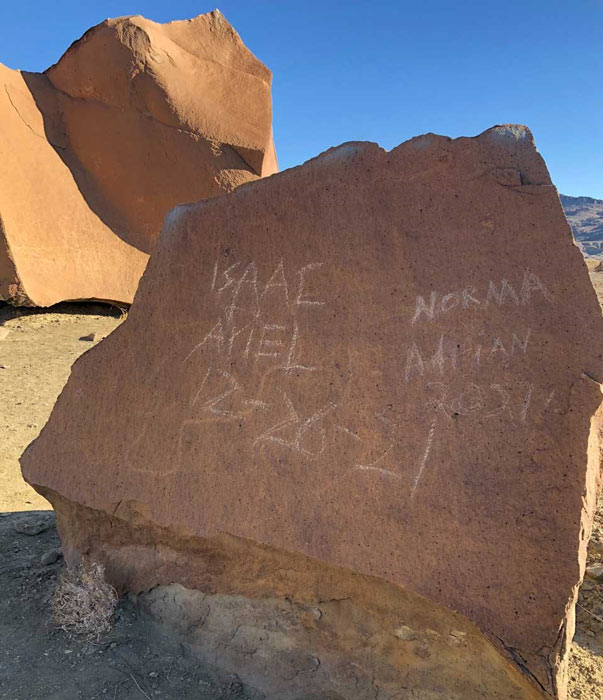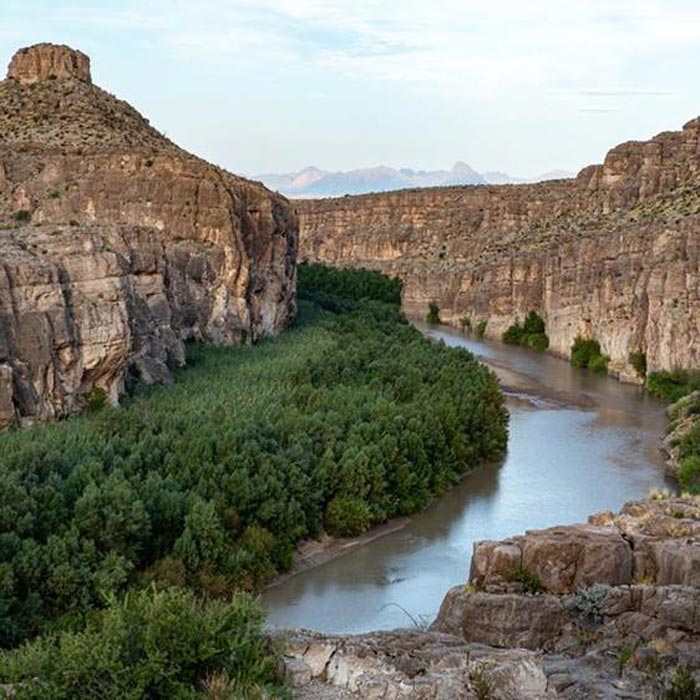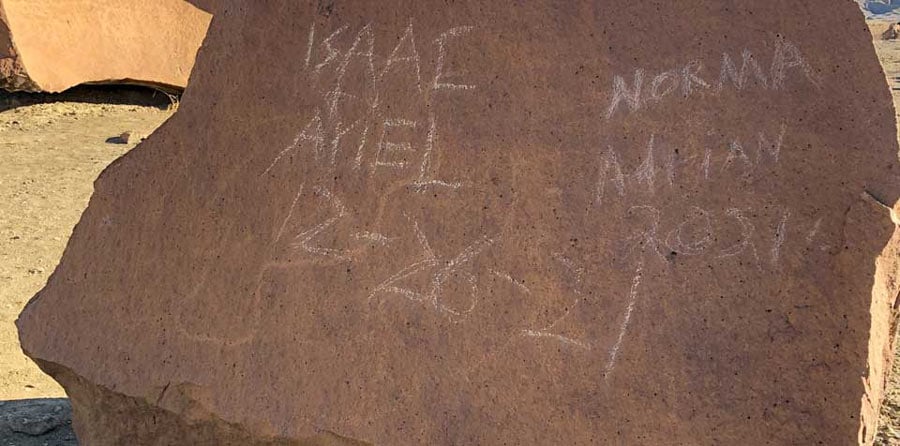Big Bend National Park Petroglyphs Irreparably Damaged by Vandals
Big Bend National Park in Texas on the Mexican border is home to enormous diversity and crucial Native American history. Native Americans left behind many abstract geometric designs and petroglyphs (carvings or incisions on the rock’s surface as a form of rock art) within the boundaries of this huge national park. Recently, the National Park Service reported that 3,000-year-old petroglyphs at Big Bend National Park have been damaged irreparably by vandals.
Tom Alex, a lifetime archaeologist who worked at the Big Bend National Park for 32 years before retiring in 2014 told the New York Times, “There’s wavy lines, curvilinear lines, geometric patterns, squiggles and things that just kind of meander across the rock surface.” He dated the Big Bend National Park petroglyphs to between 3,000 and 8,000 years old and suggested that they are some of the oldest rock art in North America, based on the design pattern and arrangement.

The irreparable damage to the surface of a petroglyph stone in the Indian Head area of Grand Bend National Park, which occurred on December 26, 2021. (National Parks Service)
A Gross Act of Vandalism in Big Bend National Park
The press release by the US National Park Service details that the unfortunate vandalism occurred on the 26th of December 2021 in the Indian Head area of Big Bend National Park. It was here that vandals scratched their names and the date across a prehistoric rock art surface. The names Norma, Adrian, Isaac and Ariel and the date 12/26/21 are visible in images of the defaced rock, as the above images show.
- Native American History Destroyed In Georgia’s Track Rock Gap
- Vandals Damage Ancient Artifacts in Mesa Verde Park in Colorado to Create Graffiti
“Big Bend National Park belongs to all of us. Damaging natural features and rock art destroys the very beauty and history that the American people want to protect in our parks," said Big Bend National Park Superintendent Bob Krumenaker. “With each instance of vandalism, part of our Nation's heritage is lost forever."
Tom VandenBerg, Big Bend National Park's chief of interpretation and visitor services, told CNN that an attempt at repairing the damage was futile. The petroglyph stone surface cannot be restored to its original state and parts of the graffiti are still visible. Since 2015, the national park has recorded at least 50 cases of vandalism, and the same press release urged anyone with information to come forward. Rock art and ancient cultural sites are protected under the Archaeological Resources Protection Act (ARPA) and vandalism of any kind is a crime based on this federal act.
As a precautionary measure, the park had taken great care not to provide maps and directions to the Indian Head area. Lately, stewards across protected cultural sites in the USA have complained of increased vandalism and graffiti, pointing to a bigger pattern of public ignorance and disdain of precious historical artifacts.

Big Bend National Park is known for its incredible diversity and the rock art left behind by Native Americans. (National Parks Service)
A Park with Great Archaeological and Biological Importance
Big Bend National Park, which opened in 1944, is of great archaeological and biological importance as a prime example of a Chihuahuan desert ecosystem. The park is home to 1,200 species of plants, 450 species of birds, and many reptile and mammalian species that have coexisted the millennia. The park is also known for its fascinating dinosaur bones, dated through geological deposits that stretch all the way back to the Triassic and Cretaceous periods.
Records from the 16th century reveal the presence of various native Indian groups inhabiting Big Bend National Park, particularly the Chisos Indians and the nomadic Jumano. The 16th-century records were recorded by Spanish conquistadores and Franciscan friars in their entourage, who were looking for land, gold, silver, and other precious resources.
The Franciscan friars set up evangelism centers in the park region to spread Christianity to the natives and also to control land resources. The conquistadors on the other hand expended their energies on establishing a line of presidios or forts, which today run along the border with modern-day Mexico.
Late in the 18th century territorial tensions between the Mescalero Apache and the Comanche took place within the boundaries of the park.
By the middle of the 19th century, the armies of the United States had made their presence felt in the Big Bend region with the sole intention of suppressing the natives and usurping their land for the steadily expanding American state. By the end of the 19th century, white ranchers arrived and began colonizing vast areas of land for private sheep, goat, and cattle farms.
- Vandals Drill into Neolithic Jersey Dolmen Looking for Quartz
- ‘Unbiased’ Computer Software Learns To Decipher Australian Rock Art
By the early 20th century, the Big Bend National Park area also started attracting miners, who were moving into the rapidly booming oil and mineral industries. Unfortunately, the park area was found to be rich in mineral deposits and the area became vulnerable to mining, farming, overgrazing, and other negative influences caused by the new white men.
Top image: The surface of a petroglyph stone in the Indian Head area of Grand Bend National Park, where four vandals wrote their names and the date on December 26, 2021.Source: National Parks Service
By Sahir Pandey
References
Holpuch, A. 2022. Prehistoric Rock Art ‘Irreparably Damaged’ by Vandals, Officials Say. Available at: https://www.nytimes.com/2022/01/09/us/big-bend-park-rock-vandalism.html
Spary, S. 2022. Vandals defaced ancient Big Bend rock art by scratching their names into it. Available at: https://edition.cnn.com/travel/article/big-bend-vandalized-scli-intl/index.html
VandenBerg, T. 2022. Ancient rock art vandalized. Available at: https://www.nps.gov/bibe/learn/news/ancient-rock-art-vandalized.htm


















Comments
Such ignorance and selfishness. They were probably as high as kites too.
A few years ago we had vandals push over one of the giant rocks at Brimham in North Yorkshire, England. They somehow got it over a cliff where it smashed, damaging other rocks below. All that area is ancient.
All they do is cause authorities to clamp down and ban people from these places, ruining it for the majority who know how to respect the natural environment.
Another instance of ignorance in action. Real Jerks (and worse) do that kind of thing. Need to catch them and string them up by the soft parts.